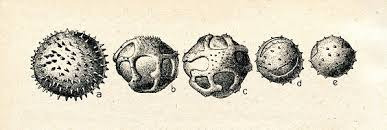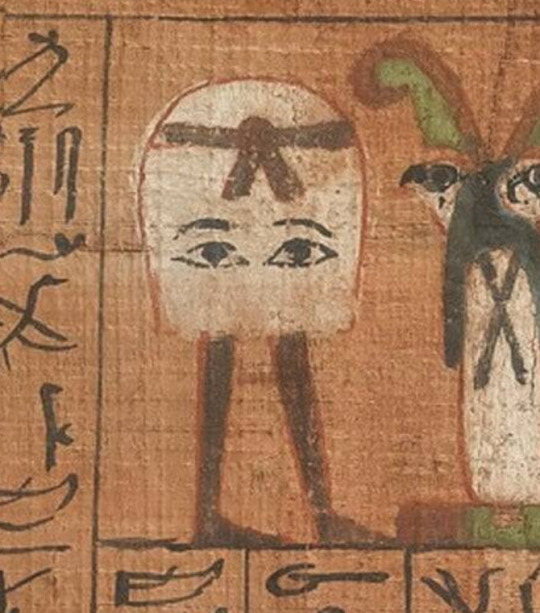#Vertisol
Explore tagged Tumblr posts
Text
epipedión Vertisol edafología
Que es Vertisol El término vertisol deriva del vocablo latino “vertere” que significa verter o revolver, haciendo alusión al efecto de batido y mezcla provocado por la presencia de arcillas hinchables. El material original lo constituyen sedimentos con una elevada proporción de arcillas esmectíticas, o productos de alteración de rocas que las generen. Alto contenido en arcillas (>30%). Los…

View On WordPress
0 notes
Text
Los colores del suelo y las interesantes historias que cuentan
Un apasionante viaje por el variado y elocuente cromatismo de los suelos del mundo

#noticiaspropronews#noticias#PROPRONews#Ciencia#Planeta#Antonio López Jordán#El Color del Suelo#Mioceno#mediterráneo#Chernozems#Vertisoles#Hematita#Terra Rossa#Cromotoponimia
1 note
·
View note
Text
Science Saturday: Paleosols
Paleosol literally means "ancient soil." In geology and paleontology, a paleosol is a former soil preserved by burial under alluvium, loess or volcanic deposits.

Paleosols are frequently used to help determine the climate when they were deposited.

Figure 4. Photos illustrating paleo-Vertisol features in the Yellow Cat Member at Poison Strip, Utah (Figure 1; PS), where local conditions have maintained exceptional paleosol exposures of far greater quality than those at Utahraptor Ridge (Figure 3). (a) Two stacked paleosols (ps1, ps2); ps1 contains several carbonate-filled cracks (horizontal white arrows), and ps2 exhibits a zone of prominent, filled soil cracks (sc). Pathways of the downward translocation of sandier soil material from above into clayey soil material below are shown for selected cracks as yellow arrows at the left. (b) Closeup of soil cracks (sc) in ps2. (c) Another paleosol (ps) with prominent slickensides, identified by diagonal white arrows; general sense of shear along slickensides is shown by yellow arrows. Shear within this Early Cretaceous soil profile moved materials obliquely up and down. Features shown in these photographs suggest that perfect stratigraphic superposition (e.g., of paleosol organic matter and volcanogenic zircons) is very unlikely to exist within these paleosol profiles due to ancient pedoturbation. We propose that conditions were similar at Utahraptor Ridge during the Early Cretaceous (see text for further discussion).
(Joeckel et al, 2023)
A vertisol is a swelling clay soil. Swelling clays have a significant amount of ash in them which causes them to expand when wet. These clays tend to be incredibly sticky, adding 10 pounds to your feet in minutes. This indicates that there was likely some active volcanism during the early Cretaceous.

Paleosols can also be used to reconstruct paleo atmospheres. Oxidized paleosols like the red clay in the photograph above could indicate a rise in atmospheric oxygen.

Paleosols often contain fossilized pollen which tells a lot about ancient ecosystems.
Who knew old dirt could be so informative!
#paleontology#fossils#geology#fun facts#science#prehistoric#palynology#paleosol#soil#cedar mountain formation
23 notes
·
View notes
Note
can i have a dirt fact
wagging the tail I don't have. of course u can!!
ok so uh... how bout my favorite type of dirt. vertisols!!! vertisols are cool because they're very clay rich soils and vary a Ton between seasons because they're really good at absorbing water! so if you go to see a vertisol in the winter it'll look normal because it's expanded in size due to the rain. but in the summer when it dries back out it has these huuuge cracks. some vertisols have large enough cracks to probably break a leg in.

this is also fun for architects who don't do enough research because this also means vertisols are an Awful soil to build on.

and this happens!
8 notes
·
View notes
Note

Nooo how can mole people soil scientists tell which soils is the tastiest if they can’t say how sandy or loamy it is??? Consider that digging skills come in handy when digging graves. Even in vertisols…
19 notes
·
View notes
Text
the wikipedia page for USDA soil taxonomy is really good
There are 12 soil orders (the top hierarchical level) in soil taxonomy.[2][3] The names of the orders end with the suffix -sol. The criteria for the different soil orders include properties that reflect major differences in the genesis of soils.[4] The orders are:
Alfisol – soils with aluminium and iron. They have horizons of clay accumulation, and form where there is enough moisture and warmth for at least three months of plant growth. They constitute 10% of soils worldwide.
Andisol – volcanic ash soils. They are young soils. They cover 1% of the world's ice-free surface.
Aridisol – dry soils forming under desert conditions which have fewer than 90 consecutive days of moisture during the growing season and are nonleached. They include nearly 12% of soils on Earth. Soil formation is slow, and accumulated organic matter is scarce. They may have subsurface zones of caliche or duripan. Many aridisols have well-developed Bt horizons showing clay movement from past periods of greater moisture.
Entisol – recently formed soils that lack well-developed horizons. Commonly found on unconsolidated river and beach sediments of sand and clay or volcanic ash, some have an A horizon on top of bedrock. They are 18% of soils worldwide.
Gelisol – permafrost soils with permafrost within two metres of the surface or gelic materials and permafrost within one metre. They constitute 9% of soils worldwide.
Histosol – organic soils, formerly called bog soils, are 1% of soils worldwide.
Inceptisol – young soils. They have subsurface horizon formation but show little eluviation and illuviation. They constitute 15% of soils worldwide.
Mollisol – soft, deep, dark soil formed in grasslands and some hardwood forests with very thick A horizons. They are 7% of soils worldwide.
Oxisol – are heavily weathered, are rich in iron and aluminum oxides (sesquioxides) or kaolin but low in silica. They have only trace nutrients due to heavy tropical rainfall and high temperatures and low CEC of the remaining clays. They are 8% of soils worldwide.
Spodosol – acid soils with organic colloid layer complexed with iron and aluminium leached from a layer above. They are typical soils of coniferous and deciduous forests in cooler climates. They constitute 4% of soils worldwide.
Ultisol – acid soils in the humid tropics and subtropics, which are depleted in calcium, magnesium and potassium (important plant nutrients). They are highly weathered, but not as weathered as Oxisols. They make up 8% of the soil worldwide.
Vertisol – inverted soils. They are clay-rich and tend to swell when wet and shrink upon drying, often forming deep cracks into which surface layers can fall. They are difficult to farm or to construct roads and buildings due to their high expansion rate. They constitute 2% of soils worldwide.


god id love a farming game where you had to know all the soils and stuff
28 notes
·
View notes
Text
17 notes
·
View notes
Text
Trying to figure out which one of my homebrew dnd gods should get this as their eldritch form. Like which one of the 12 major soil groups fits the bill for small-and-mischievous-looking-ghost-thing-with-only-eyes-and-legs-visible. Currently leaning towards Vertisol or Inceptisol.
tis the season to remember Medjed aka The Smiter, an invisible egyptian deity with laser eyes and nonbinary swagger:



rotating them gently in my mind as they do a spiffy little dance number
#dnd#homebrew#soil science#dungeons and dragons#dnd homebrew#in all honesty paleosol would probably be the funniest option#can you imagine seeing the 12 of the pantheon all be these horrific and terrifying beings#so you steel your nerves in preparation of meeting the god of gods—Paleosol#for how much more terrifying must they be to hold power over all the others?#and then you walk in and you see this thing doing it’s spiffy little dance
43K notes
·
View notes
Text
Columbia Women's Vertisol Trail Hiking Shoe
Price: (as of – Details) A versatile trail shoe that does it all, this sneaker is ready to tackle any terrain. They’re durable and supportive, with an engineered underfoot system that delivers superior comfort, stability, and rebound. The traction rubber sole keeps you sure-footed on the move. Columbia offers this hiking shoe in multiple colors and sizes. Package Dimensions : 12.56 x 8.78 x…
0 notes
Text
i’ve been looking at soils all day i think i’m ready
#i can basically name all the major characteristics for all the soils#except vertisols cause fuck those
3 notes
·
View notes
Text
Finca Higueruela CSIC
Que es la Finca Higueruela de CSIC Finca Higueruela (Toledo), mas concretamente La Estación de Campo Experimental de La Higueruela (HEFS) , es un espacio de unas 90Ha propiedad del CSIC creado en 1972 donde se realizan trabajos científicos y experimentales donde se analizan diversos factores relacionaos con la ecología, el cambio climático, la biodiversidad, la erosión de los suelos y la…

View On WordPress
#barbecho#cambio climático#cereales#Ecología#Edafologia#epipedión#estudios científicos#experimentación#finca higueruela#girasol#Luvisol#produccion#setos#trigo#Vertisol
0 notes
Text
“I thank you God for this most amazing day, for the leaping greenly spirits of trees, and for the blue dream of sky and for everything which is natural, which is infinite, which is yes.” ― e.e. cummings
Petrichor in the forest, after the rain, what do you smell?
Dipping and diving into Petrichor Mallard Ducklings
Trembling Aspen Leaf with dew drops, Richard St. Barbe Baker Afforestation Area. Saskatoon, SK, CA
Petrichor
i have to write
i have to relate the delight
the rain
have you been there in the rain,
when it is a misty rain, a heavy fog, barely getting wet,
have you been there right after the rain,
the grass slowly melting and dissolving into wet shoes,
the nose awake. Erigir, erigir, erigir.
Have you become aware
do you know Petrichor
as well as I love Petrichor?
Are you there, fully aware of the totality
of the Pedogenesis which is occuring?
it is so very delightful and enriching,
and one may even say invigorating as well.
have you traveled around and taken the time
perhaps to compare the dark of the dark gray Chernozemic soil
laying beneath the grasslands with the
rich gray Luvosolic and Brunisolic soils which form
the rich forest floor? these are perhaps my favourite.
but there is no denying that Regosolic, Gleysolic, and Vertisolic soils
are so unique and ever divergent
Or perhaps, you prefer those Solonetzic soils, where the
remnants of the prairies rich in potash from seas of bygone eras
decorate the landscape in salty white tough crusts.
On the days where i bend down and get my knees wet
in addition to my shoes, i revel in the Organic soils, and
share my time with sedges and mosses that is a time when
time stands still and you realize you are not alone,
its a time of magic when from nowhere
the mushrooms spring up in the depths
between the tree roots.
Humus embiggens, rain enriches.
Oh Petrichor, oh Petrichor, how i miss you in the winter months
And now, Phenology, be blessed, you have returned again!
Oh! over spring, summer, and autumn, and how you vary
and which is best, nay I cannot say
but thank goodness you have returned, you were truly missed
hello again Petrichor, don’t stay away so long.
Oh best beloved reader, do say, what are you connected to?
Do you also know Petrichor?

They recognize that while knowledge about nature is vital; passion is the long-distance fuel for the struggle to save what is left of our natural heritage and ~ through an emerging green urbanism ~ to reconstitute lost land and water. Passion does not arrive on videotape or on a CD; passion is personal. Passion is lifted from the earth itself by the muddy hands of the young; it travels along grass-stained sleeves to the heart. If we are going to save environmentalism and the environment, we must also save an endangered indicator species: the child in nature. Louv. 2005. p. 158
“The great biologist E.O. Wilson has said…”the question I am asked most frequently about the diversity of life [is]: if enough species are extinguished, will the ecosystems collapse, and will the extinction of most other species follow soon afterward? The only answer anyone can give is, possibly. By the time we find out, however, it might be too late. One planet, one experiment.” Sarah James and Torbjörn Lahti
Blairmore Sector Plan Report; planning for the Richard St. Barbe Baker Afforestation Area, George Genereux Urban Regional Park and West Swale and those land areas around them inside of Saskatoon city limits
P4G Saskatoon North Partnership for Growth The P4G consists of the Cities of Saskatoon, Warman, and Martensville, the Town of Osler and the Rural Municipality of Corman Park; planning for areas around the afforestation areas and West Swale outside of Saskatoon city limits
Bibliography.
James, Sarah and Torbjörn Lahti. The Natural Step for Communities. How Cities and Towns can change to sustainable practices. ISBN 0-86571-491-6. New Society Publishers. Gabriola Island, B.C. 2004.
For directions as to how to drive to “George Genereux” Urban Regional Park
For directions on how to drive to Richard St. Barbe Baker Afforestation Area
For more information:
Blairmore Sector Plan Report; planning for the Richard St. Barbe Baker Afforestation Area, George Genereux Urban Regional Park and West Swale and areas around them inside of Saskatoon city limits
P4G Saskatoon North Partnership for Growth The P4G consists of the Cities of Saskatoon, Warman, and Martensville, the Town of Osler and the Rural Municipality of Corman Park; planning for areas around the afforestation area and West Swale outside of Saskatoon city limits
Richard St. Barbe Baker Afforestation Area is located in Saskatoon, Saskatchewan, Canada north of Cedar Villa Road, within city limits, in the furthest south west area of the city. 52° 06′ 106° 45′ Addresses: Part SE 23-36-6 – Afforestation Area – 241 Township Road 362-A Part SE 23-36-6 – SW Off-Leash Recreation Area (Richard St. Barbe Baker Afforestation Area ) – 355 Township Road 362-A S ½ 22-36-6 Richard St. Barbe Baker Afforestation Area (West of SW OLRA) – 467 Township Road 362-A NE 21-36-6 “George Genereux” Afforestation Area – 133 Range Road 3063 Wikimapia Map: type in Richard St. Barbe Baker Afforestation Area Google Maps South West Off Leash area location pin at parking lot Web page: https://stbarbebaker.wordpress.com Where is the Richard St. Barbe Baker Afforestation Area? with map Where is the George Genereux Urban Regional Park (Afforestation Area)? with map
Pinterest richardstbarbeb
Facebook Group Page: Users of the George Genereux Urban Regional Park
Facebook: StBarbeBaker
Facebook group page : Users of the St Barbe Baker Afforestation Area
Facebook: South West OLRA
Twitter: StBarbeBaker
You Tube Richard St. Barbe Baker Afforestation Area
You Tube George Genereux Urban Regional Park
Should you wish to help protect / enhance the afforestation areas, please contact the City of Saskatoon, Corporate Revenue Division, 222 3rd Ave N, Saskatoon, SK S7K 0J5…to support the afforestation area with your donation please state that your donation should support the Richard St. Barbe Baker Afforestation Area, or the George Genereux Urban Regional Park, or both afforestation areas located in the Blairmore Sector. Please and thank you! Your donation is greatly appreciated.
1./ Learn.
2./ Experience
3./ Do Something: ***
“St. Barbe’s unique capacity to pass on his enthusiasm to others. . . Many foresters all over the world found their vocations as a result of hearing ‘The Man of the Trees’ speak. I certainly did, but his impact has been much wider than that. Through his global lecture tours, St. Barbe has made millions of people aware of the importance of trees and forests to our planet.” Allan Grainger
…”To be whole. To be complete. Wildness reminds us what it means to be human, what we are connected to rather than what we are separate from.” ~Terry Tempest Williams
Petrichor, where have you been? “I thank you God for this most amazing day, for the leaping greenly spirits of trees, and for the blue dream of sky and for everything which is natural, which is infinite, which is yes.”
#brunisolic#chernozemic#e.e. cummings#gleysolic#grasslands#luvosolic#moss#mushroom#pedogenesis#petrichor#rain#regosolic#sedge#soil#solonetzic#vertisolic#woodlands
0 notes
Text
In my dream last night I was apparently working on a Minecraft mod about....... geology and soil science......... and it included things like sinkholes and different soil types (i.e. vertisols that make your builds subside over time.) Honestly that’s so fucking on-brand for me, 10/10 dream
14 notes
·
View notes
Quote
The rolling to nearly level plains of the Northern Blackland Prairie ecoregion are underlain by interbedded chalks, marls, limestones, and shales of Cretaceous age. Soils are mostly fine-textured, dark, calcareous, and productive Vertisols. Historical vegetation was dominated by little bluestem, big bluestem, yellow Indiangrass, and tall dropseed. In lowlands and more mesic sites, such as on some of the clayey Vertisol soils in the higher precipitation areas to the northeast, dominant grasses were eastern gamagrass and switchgrass. Also in the northeast, over loamy Alfisols, were grass communities dominated by Silveanus dropseed, Mead’s sedge, bluestems, and long-spike tridens. Common forbs included asters, prairie bluet, prairie clovers, and black-eyed susan. Stream bottoms were often wooded with bur oak, Shumard oak, sugar hackberry, elm, ash, eastern cottonwood, and pecan. Most of the prairie has been converted to cropland, non-native pasture, and expanding urban uses around Dallas, Waco, Austin, and San Antonio.
Descriptions of the Level IV Ecoregions of Texas
3 notes
·
View notes
Text
Listen closely for you will need this information in the days ahead and I can only share it once:
All soils can be classified into one of 12 soil orders, each of which is subdivided into suborders and greatgroups, with further subdivisions of more minute specificity. The first six soil orders can be thought of as a timeline of development. The youngest soils are Entisols and have not developed very much, followed by Inceptisols, which have developed slightly. Alfisols and Mollisols are mature soils, with the former being characteristic to forests and the latter being characteristic of grasslands. Ultisols are very mature soils and have largely weathered to have high clay content, while Oxisols are the most weathered soils, and are characteristic of very old sediments such as parts of Africa and Australia, or highly erosive environments such as rainforests. The remaining orders are defined by specific characteristics. Aridisols are very dry. Gelisols are frozen for at least part of the year. Histosols have a high proportion of organic material. Andisols have a high proportion of volcanic ash. Vertisols have a high proportion of certain kinds of clay. Spodosols form under the unique conditions of pine forests associated with sandy soils. This is not a full picture of soil orders, but a brief introduction.
I trust you know what to do with this information in the days ahead. Now go, my child! *dies*
114 notes
·
View notes
Text
A vertisol, or vertosol,[1] is a soil type in which there is a high content of expansive clay minerals, many of them known as montmorillonite, that form deep cracks in drier seasons or years. In a phenomenon known as argillipedoturbation, alternate shrinking and swelling causes self-ploughing, where the soil material consistently mixes itself, causing some vertisols to have an extremely deep A horizon and no B horizon. (A soil with no B horizon is called an A/C soil). This heaving of the underlying material to the surface often creates a microrelief known as gilgai.
The shrinking and swelling of vertisols can damage buildings and roads, leading to extensive subsidence. Vertisols are generally used for grazing of cattle or sheep. It is not unknown for livestock to be injured through falling into cracks in dry periods. Conversely, many wild and domestic ungulates do not like to move on this soil when inundated. However, the shrink-swell activity allows rapid recovery from compaction.
A gilgai is a small, ephemeral lake formed from a depression in the soil surface in expanding clay soils. Additionally, the term "gilgai" is used to refer to the overall micro-relief in such areas, consisting of mounds and depressions, not just the lakes themselves. The name comes from an Australian Aboriginal word meaning small water hole.[1] These pools are commonly a few metres across and less than 30 cm (12 in) deep, however in some instances they may be several metres deep and up to 100 m (330 ft) across. Gilgais are found worldwide wherever cracking clay soils and pronounced wet and dry seasons are present.[1] Gilgais are also called "melonholes, crabholes, hogwallows or puff and shelf formations".[2]

Gilgais are thought[1] to form in vertisols through repeated cycles of swelling of the clay when wet and subsequent shrinkage upon drying. This action, known as argillipedoturbation, causes the soil to crack when dry and loose soil material then fills these cracks. When the soil swells upon subsequent re-wetting the soil pressure cannot be dispersed into the now-full cracks and the soil is forced sideways causing a mound to form between cracks and a depression to form at the location of the crack. The process is then further exaggerated by the depressions holding water and thus becoming wetter and swelling more than the mounds, causing even greater shrinkage and cracking. In addition, the cracks channel water deeply into the soil causing even greater swelling and subsequent cracking of the depression areas. Each cycle of swelling, shrinkage and cracking becomes more exaggerated and the landscape eventually becomes covered by a repeated pattern of mounds and depressions. The depressions hold surface water during the wet seasons.
Australia has an abundance of cracking clay soils and a large areas dominated by very pronounced wet and dry seasons providing ideal circumstances for the formation of gilgais. Areas outside Australia that also have the necessary conditions for gilgai formation include central Russia and several parts of the United States, including South Dakota and Texas.[1] Gilgais are structurally similar to the patterned ground of frigid regions, however periglacial soil polygons are formed by repeated freeze-thaw cycles rather than the soil moisture cycles that create gilgai.
Gilgais were an important source of water for Indigenous Australians and enabled people to seasonally forage over areas that lacked permanent water. Similarly, they allowed the stock of early Australian pastoralists to seasonally graze these areas. The introduction of water wells and pumps has reduced the value of gilgais to humans as a source of water. Gilgais are now generally considered a nuisance by farmers. The movement of soil associated with gilgai formation damages infrastructure including building foundations, roads and railway lines and the undulations produced interfere with crop harvesting. The presence of seasonal water in grazing land makes it more difficult to control stock and provides a water supply for "vermin" such as feral pigs and kangaroos.
Gilgais remain of great ecological significance as a source of water for animal and plant life. Crayfish burrow in the wet basins and ants build up the mounds, magnifying the formations through bioturbation.[3]
Patterned ground is the distinct and often symmetrical natural pattern of geometric shapes formed by the deformation of ground material in periglacial regions. It is typically found in remote regions of the Arctic, Antarctica, and the Outback in Australia, but is also found anywhere that freezing and thawing of soil alternate; patterned ground has also been observed in the hyper-arid Atacama Desert and on Mars.[2][3] The geometric shapes and patterns associated with patterned ground are often mistaken as artistic human creations. The mechanism of the formation of patterned ground had long puzzled scientists but the introduction of computer-generated geological models in the past 20 years has allowed scientists to relate it to frost heaving, the expansion that occurs when wet, fine-grained, and porous soils freeze.

10 notes
·
View notes